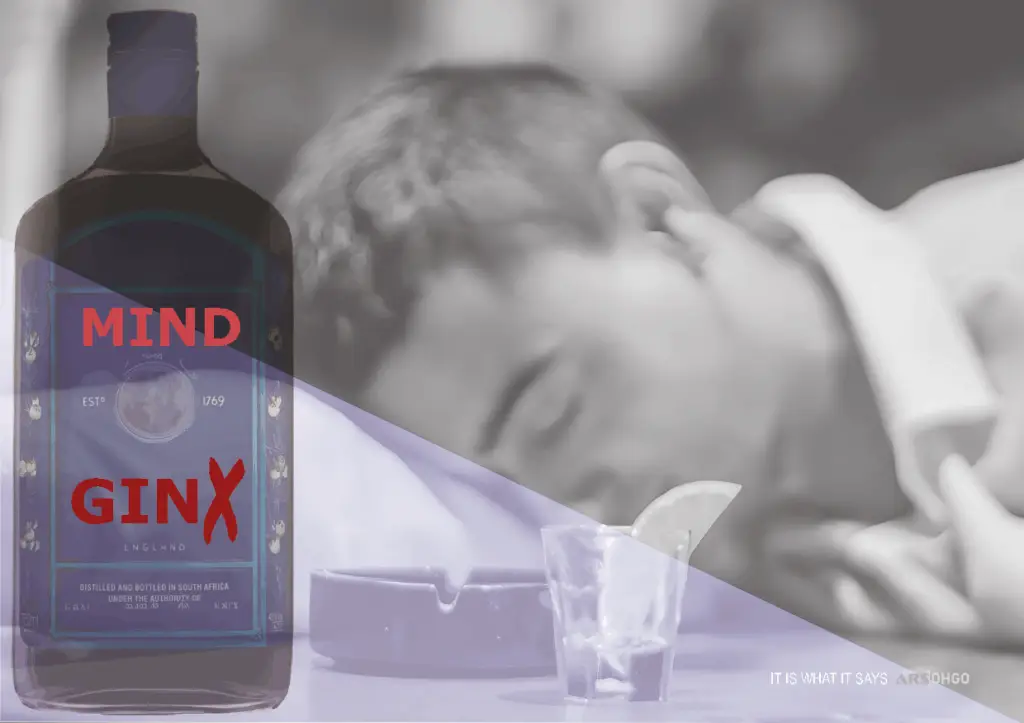
“GinX” is not an advertisement for gin, and the “X” following “Gin” isn’t added for emphasis. The letter “X” extends the word “gin” to create the phonetic suggestion of “jinx”—pronounced d͡ʒˈɪŋks—thereby establishing the work’s true subject. In this context, “jinx” (among its various possible translations within the same semantic field) corresponds to the German word “Fluch” (curse). Nothing more needs to be said.
[A] The combination of the background of the picture and another visual object may evoke an (English) term that is ambiguous in German and thus “calls up a second theme”.
[B] In addition, this combination may result in a new subject or an invented word through an equally pronounced but differently spelled word combination, as well as through a differently pronounced but equally spelled word.
[C] Sometimes it is the title of the work that reveals the background and thematic association of the image.
[D] And in the one or other case it is just a modified photograph.

 Posted on April 24, 2025
Posted on April 24, 2025  by arslohgo
by arslohgo 0
0